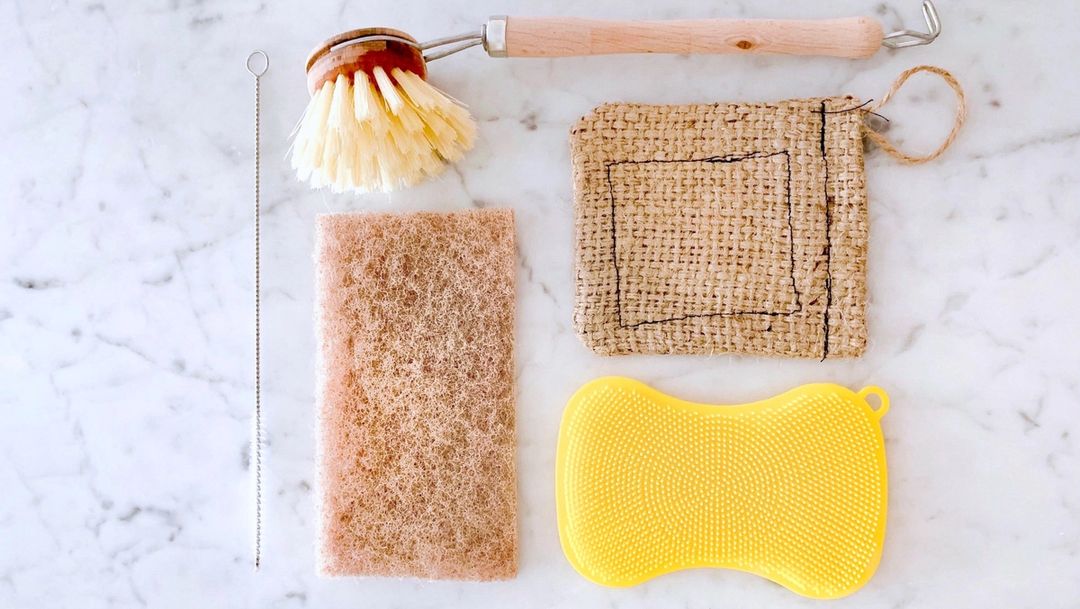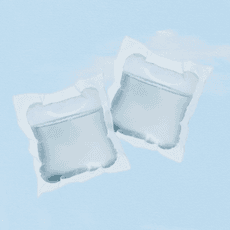How Dirty Are Kitchen Sponges?

Written by: Natalie Henderson, Marketing @blueland
October 22, 2019
Kitchen sponges hold more bacteria than any other surface in your home. We use sponges every day to clean our dishes and surfaces, but in reality, they spread bacteria. To make matters worse, most conventional sponges are made from plastic and can’t be recycled or composted. So those bacteria-ridden blocks of plastic end up in landfills and oceans. We’ll give you the details on kitchen sponges and point you to some alternatives.
Are There Germs In Your Kitchen Sponge?
How dirty are kitchen sponges? German scientists studied kitchen sponges found in homes across Germany. Though the sample size was small, the number of bacteria they found in these sponges was not. Researchers found 362 different species of bacteria in sponges, and 45 billion bacteria per square centimeter. That means, part of your kitchen sponge could have as much bacteria as the inside of a toilet. Gross. The USDA in the United States recommends that you try to clean your kitchen sponges daily with hot water to reduce their bacterial load, but even that is not a perfect solution.
Is The Kitchen Sponge The Dirtiest Item In The House?
The kitchen sponge is often considered one of the dirtiest household items in terms of food safety, as its moist and porous nature provides an ideal environment for bacterial growth. Studies have shown that kitchen sponges can harbor a high concentration of bacteria, which can potentially lead to cross-contamination and foodborne illnesses such as food poisoning if not properly sanitized. To keep your kitchen sponge clean and reduce the risk of bacterial contamination, it is recommended to regularly replace sponges or sanitize them.
What Are The Potential Health Risks Of Using A Dirty Kitchen Sponge?
Using a dirty kitchen sponge can lead to bacterial contamination and potential health risks such as food poisoning, skin infections, and the spread of harmful pathogens. Regularly cleaning or replacing sponges is crucial to maintaining a hygienic kitchen environment and preventing cross-contamination.
Can You Clean A Sponge?
The best way to clean your dirty sponges is in the dishwasher or in the microwave. Before you do so make sure you read the label and don’t put any metallic sponges or certain synthetic sponges in the microwave because they will catch on fire. If you do choose to microwave your sponge, make sure it is damp because a dry sponge is also highly flammable. If you choose to throw your sponge in the dishwasher, make sure it is on a high-heat setting to ensure the bacteria in your sponge are killed. Unfortunately, even with daily cleaning, sponges still harbor significant amounts of common bacteria. This is especially true for used sponges that have not been replaced regularly despite regular cleaning. The best solution? Ditch the conventional kitchen sponge altogether.
When Should You Throw Away A Sponge?
Knowing how much bacteria is growing inside of your sponge is going to make you want to throw it out, and you should. It is recommended that you dispose of your sponge at least every two weeks, if not weekly. Most conventional sponges are made of plastic or from oils that cannot be recycled or composted. Every week you are dumping another piece of plastic into oceans and landfills. Instead of throwing out a sponge every week, try some of our favorite sponge alternatives instead.
Low Waste Sponge Alternatives
Now that you’re ready to stop using conventional sponges, here are some options we recommend that will keep your kitchen cleaner and the planet cleaner. Like traditional sponges, these alternatives have their downsides, but these options will last longer and can be disposed of without harming the environment.
1. Dish Brush: Dish brushes house fewer bacteria than sponges because they have fewer spaces for bacteria to hide in. They also dry quicker making them less habitable for bacteria. Choose a brush that uses metal, wood and plant fibers so that you can compost and recycle the brush when you are done with it. While brushes are great, they can be hard to maneuver around tight corners, so sometimes you might need to use another product to get all of your dishes clean.
2. Unsponge: An unsponge is made from natural, biodegradable fibers like cotton or jute. You can make an unsponge at home with fabric you have, or buy an eco-friendly, compostable option. Because they are cloth, they might not be as effective in scrubbing hard surfaces as typical sponges that have a scrubbing side attached. Depending on the thickness, they can also take a longer time to dry on kitchen countertops after washing.
3. Silicone Sponge: Silicone sponges are great alternatives to traditional sponges because they don’t harbor bacteria. Silicone is long-lasting and you likely do not have to replace silicone sponges as frequently as conventional sponges. While silicone sponges are a great material alternative, it is difficult for them to hold soap, so they don’t work as well to clean flat dishes that can’t hold soapy water.
4. Linen Dishcloth: Linen is a natural fiber that is biodegradable. It is more durable than cotton, so it will last a long time. However, like unsponges, linen clothes might not be tough enough on stuck on messes to be effective for cleaning all types of dishes.
We recommend using a combination of the products listed above. You can use a dish brush and an unsponge or linen cloth, or a silicone sponge and an unsponge or linen cloth. Using one tougher surface like the brush or silicone sponge plus a softer surface like the unsponge or linen cloth will help you keep all of your dishes clean, while keeping the bacteria at bay.
These dish sponge alternatives are all cleaner alternatives to dish sponges. They are cleaner for your home, provide a significant reduction in bacteria buildup on your kitchen surfaces, and are better for the environment. Give them a try!
Cleaning Companions
Keep Reading
Refill is the New Recycle
The perfect way to start cutting out single use plastic from your home.















